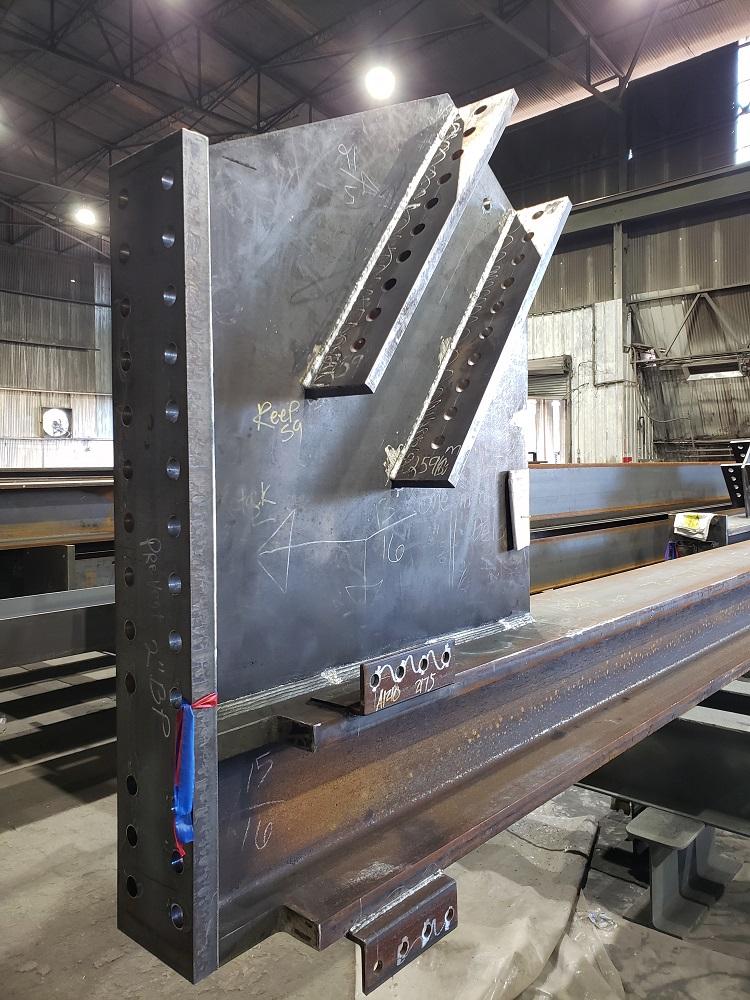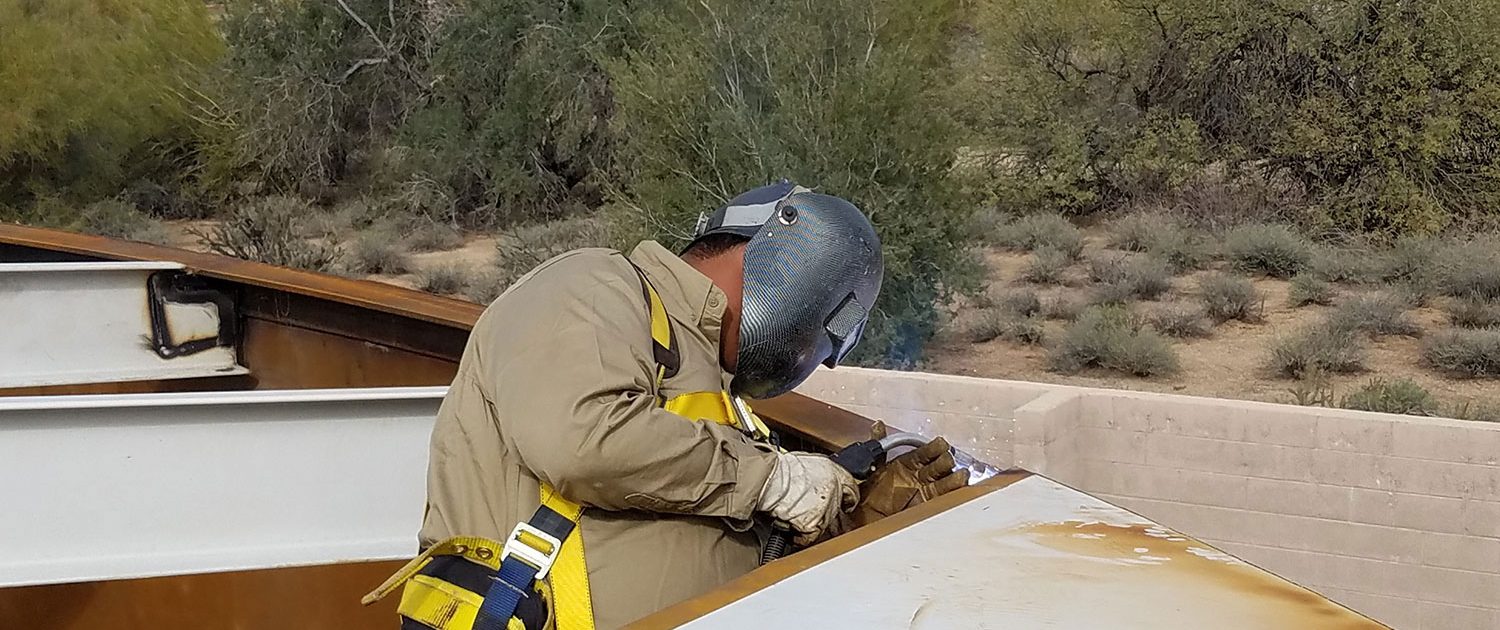Comprehensive Steel Fixing Solutions for Construction Projects
Comprehensive Steel Fixing Solutions for Construction Projects
Blog Article
Innovative Patterns in Steel Construction: Enhancing Toughness and Precision
In the world of steel fabrication, the quest of toughness and accuracy has led to a wave of innovative patterns that are reshaping the market. These patterns are not simply forming the existing yet also laying the groundwork for the future of steel fabrication, guaranteeing additional improvements in toughness and accuracy.
Advanced Welding Technologies
In the realm of steel fabrication, the fostering of sophisticated welding innovations has actually substantially transformed the sector's method to attaining remarkable quality and precision in architectural welds. Advanced welding innovations, such as laser light beam welding and friction mix welding, have actually emerged as game-changers in the area. By leveraging these advanced welding methods, steel makers can raise the longevity, stamina, and accuracy of their architectural welds, satisfying the significantly demanding demands of modern-day building and construction projects.
Robotic Automation in Manufacture
Embracing robotic automation has actually come to be a cornerstone of contemporary steel manufacture practices, enhancing procedures and enhancing performance across the industry. Robots are reinventing the means steel components are manufactured, using unparalleled precision and speed while decreasing human mistake. These automated systems can take care of recurring tasks with consistent accuracy, resulting in greater top quality end items.
One trick benefit of robot automation in steel manufacture is the ability to work around the clock without fatigue, considerably boosting production outcome. This continuous operation reduces downtime and increases job timelines, ultimately saving expenses for manufacturers. Furthermore, robots can be set to perform intricate tasks that might be unsafe or tough for human employees, enhancing security in the work environment.
Additionally, robotic automation allows smooth integration with other electronic technologies, such as computer-aided style (CAD) software program and Internet of Points (IoT) systems (Alpha reo). This interconnected technique boosts communication between different phases of manufacture, optimizing process and guaranteeing real-time monitoring and control. As the steel fabrication market remains to advance, robotic automation stands apart as a transformative pressure driving performance and accuracy in making processes

High-Strength Alloy Development
The development of high-strength alloy advancement in steel construction is reshaping the market's method to improving material sturdiness and performance. High-strength alloys are engineered to exhibit exceptional mechanical homes, such as boosted tensile stamina, strength, and rust resistance compared to traditional steel qualities. By including these innovative alloys right into construction processes, manufacturers can produce parts that hold up against greater tension levels and harsh settings, causing more reliable and long lasting final product.
One trick benefit of high-strength alloy development is the ability to lower material thickness without compromising architectural stability. This not only causes lighter-weight elements but additionally adds to set you back financial savings and improved performance in construction and assembly procedures. The boosted strength-to-weight ratio of these alloys permits for the design and building and construction of structures with greater load-bearing capacities while lessening overall weight.
3D Modeling and Simulation Software Application
Advancements in steel manufacture processes have been significantly thrust by the assimilation of advanced 3D modeling and simulation software program tools. These devices permit fabricators to produce thorough virtual designs of their tasks, enabling them to picture the end product with precision prior to any kind of physical work begins. By imitating various tension variables, ecological conditions, and structural tons, makers can maximize designs for improved toughness and efficiency. Additionally, 3D modeling and simulation software application enhance the manufacturing procedure by identifying potential problems early, lowering the demand for costly rework and minimizing material waste.

Sustainable Practices in Steel Manufacturing
Integrating lasting practices right into steel production procedures is like this important for decreasing environmental influence and guaranteeing lasting resource accessibility. One key sustainable technique is the adoption of energy-efficient innovations to reduce greenhouse gas discharges throughout the steel manufacturing procedure. This consists of using renewable resource sources, such as solar or wind power, to power steel plants and carrying out energy-efficient tools to optimize power use.
Another important aspect of lasting steel production is the responsible sourcing of raw products. This includes making certain that the iron ore page and other resources utilized in steelmaking are gotten from ethical and eco-friendly sources. By promoting openness in the supply chain and sticking to rigorous ecological standards, steel producers can lessen the adverse influences of source extraction on local communities and neighborhoods.

Final Thought
To conclude, the cutting-edge fads in steel construction such as advanced welding technologies, robot automation, high-strength alloy advancement, 3D modeling and simulation software application, and sustainable techniques are improving the resilience and precision of steel items. These developments are revolutionizing the steel manufacture market by improving sustainability, effectiveness, and quality. It is clear that the future of steel manufacture hinges on welcoming these advanced modern technologies to satisfy the needs of contemporary building and construction and manufacturing sectors.
In the realm of steel construction, the pursuit of toughness and precision has led to a wave of cutting-edge fads that are improving the industry.In the world of steel fabrication, the fostering of advanced welding modern technologies has substantially revolutionized the market's strategy to achieving remarkable top quality and precision in structural welds. As the steel manufacture industry continues to progress, robot automation stands out as a my website transformative force driving efficiency and precision in making procedures.
Furthermore, recycling and recycling steel scrap and waste products play a significant function in improving the sustainability of steel production. steel fixing.In verdict, the innovative trends in steel construction such as sophisticated welding modern technologies, robot automation, high-strength alloy growth, 3D modeling and simulation software, and sustainable practices are enhancing the sturdiness and accuracy of steel products
Report this page